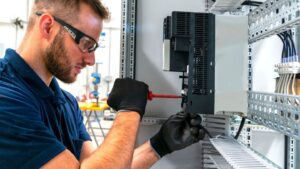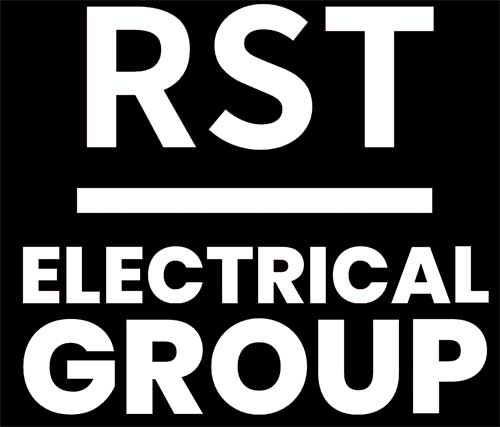Electrical Safety Tips Home: Understanding the Basics
Importance of Electrical Inspections at Home
Regular electrical inspections are crucial to ensuring your home remains safe and compliant with local electrical codes. An electrical inspection involves a thorough review of your home’s electrical system, including wiring, systems, and components, to identify any potential issues or safety hazards.
What Do Home Electrical Inspections Entail?
During an inspection, a qualified electrician will check for:
- Overloads: Ensuring that the electrical load is properly managed to prevent overheating and potential fires.
- Potential Shock Risks and Fire Hazards: Identifying any risks that could lead to electrical shocks or fires.
- Compliance with Safety Standards: Verifying that all installations meet the required safety codes and standards.
When and How Often Should Home Inspections Be Conducted?
It’s recommended to have your home inspected:
- Upon Purchase: When you buy a new home, especially if it’s not newly built.
- For Older Homes: Homes over 40 years need regular checks due to aging wiring systems.
- After Major Appliance Addition: If you’ve added appliances that draw a lot of power, like HVAC systems or large kitchen appliances.
- Post Major Renovations: Any significant structural changes could affect your home’s electrical framework.
- Every Three to Five Years: To maintain a safe electrical system, a routine inspection every few years can prevent many electrical issues.
Recognizing Signs of Faulty Wiring at Home
Faulty wiring is one of the primary culprits behind electrical accidents in homes, making it essential to prevent electrical hazards at home. Recognizing signs of faulty wiring early can prevent serious consequences, including electrical fires and electrocution. Homeowners should be vigilant and responsive, ensuring that any abnormalities in the home’s electrical system are addressed promptly. Regular electrical inspections play a vital role here, helping to identify problems before they escalate into serious hazards. Familiarizing oneself with these signs is a fundamental aspect of maintaining a safe living environment.
Identifying Faulty Wiring: Key Visual Indicators
Visual indicators of faulty wiring are often the first warning signs that homeowners can easily notice. These include:
- Flickering or dimming lights: Often a sign of poor connection or overloading.
- Discolored or warm outlets: These can indicate a potential overheating issue, which should be addressed immediately to enhance electrical outlet safety.
- Sparking outlets: When plugging or unplugging devices, visible sparks can suggest deteriorating wiring or issues within the outlet itself, often necessitating the need for GFCI outlets in your home.
- Frequent breaker trips: Constant tripping indicates overloaded circuits or possibly faulty wiring systems.
Observing these indicators can prevent the escalation of electrical hazards, highlighting the importance of electrical inspections.
Consequences of Ignoring Faulty Wiring: Preventing Electrical Hazards at Home
Ignoring the signs of faulty wiring can lead to severe risks, directly threatening the safety of your home and its occupants. Among these risks are:
- Increased risk of electrical fires: Faulty wiring can overheat, potentially igniting surrounding materials, a primary concern in residential fire outbreaks.
- Electrical shocks: Compromised wiring can expose residents to dangerous shocks, particularly in areas prone to moisture without proper GFCI outlets.
- Property damage: Over time, unresolved electrical issues can cause extensive damage to electrical appliances and home infrastructure.
- Legal and insurance implications: Not adhering to safety norms, especially the importance of electrical inspections, can affect insurance claims and compliance with local safety regulations.
Recognizing and addressing these risks is crucial in preventing electrical hazards at home, underscoring the need for vigilance and regular maintenance.
Preventing Electrical Hazards at Home: Practical Electrical Safety Tips
Safe Practices for Electrical Device Usage
Safe operation of electrical devices is pivotal in preventing electrical hazards at home. Each device, from kitchen appliances to entertainment systems, must be handled according to the manufacturer’s guidelines to avoid overloading circuits and causing potential fires or shocks. The importance of electrical inspections cannot be understated, as they ensure all devices are functioning within safe parameters. Homeowners should regularly check that all devices are properly functioning and not showing any signs of damage or wear that could lead to electrical failures.
Best Practices for Electrical Device Maintenance at Home
Regular maintenance of electrical devices is essential to ensure their longevity and safety. This includes routinely checking for signs of damage, such as frayed wires or loose connections, which are common causes of electrical hazards. Ensuring that devices are not overloaded and are plugged into appropriate outlets, preferably GFCI outlets in your home, can also prevent dangerous situations. Scheduled maintenance and adherence to safety guidelines are crucial components of effective home electrical safety.
Common Mistakes in Household Electronics: Avoiding Electrical Hazards
Many common mistakes can compromise electrical outlet safety and increase the risk of fire or electrocution. These include overloading power strips, using damaged cords, and ignoring the warning signs of electrical problems, such as flickering lights or buzzing sounds. Additionally, plugging high-energy appliances into inadequate or outdated outlets without proper GFCI protection is a significant risk. Awareness and proactive management of household electronics can drastically reduce the likelihood of electrical accidents.
Importance of Proper Installation Techniques
Proper installation of electrical systems and fixtures is fundamental to ensuring safety and functionality. Incorrect installation can lead to serious electrical hazards, emphasizing the importance of electrical inspections. These inspections can verify that all installations are up to code and correctly integrated into your home’s electrical network. Homeowners should always follow the recommended guidelines for any installation to ensure their electrical systems are safe, efficient, and reliable.
DIY Electrical Work vs. Professional Installation
While DIY projects can be tempting, electrical installations should typically be performed by licensed professionals. Professional installation ensures that all electrical systems are up to code, which is critical in recognizing signs of faulty wiring and preventing electrical hazards at home. Professionals are trained to handle complex setups, including the integration of GFCI outlets in homes, which are vital in moisture-prone areas. For safety and assurance, it’s advisable to rely on experienced electricians for significant electrical work.
Steps for Safe Installation of Home Appliances
Installing home appliances safely is crucial to avoid any electrical mishaps. Here are some steps to ensure safety:
- Read the manufacturer’s instructions thoroughly before installation.
- Check the electrical requirements of the appliance to ensure your home’s system can handle the load without overloading.
- Use GFCI outlets for appliances near water sources to prevent shock.
- Secure all connections to avoid loose wires that could lead to sparks or fires.
- Consult or hire a professional for installations that involve new wiring or configurations.
Adhering to these steps can significantly reduce the risk of hazards and improve the overall safety of your electrical system.
Key Safety Devices for Electrical Safety Tips Home
The Role of GFCI Outlets in Your Home
Ground Fault Circuit Interrupter (GFCI) outlets are a critical safety feature in modern homes, designed to protect against electrical shocks. They are an essential part of preventing electrical hazards at home, especially in areas where electricity and water could potentially mix. GFCI outlets rapidly cut off power if they detect any imbalance in the electrical current, thereby preventing serious accidents. Including these outlets in homes not only enhances safety but also aligns with regulatory safety requirements.
How Do GFCI Outlets Enhance Home Safety?
GFCI outlets monitor the balance of electrical current flowing through a circuit and will instantly shut off power when they detect a ground fault. This is crucial for preventing severe injuries or fatalities associated with electrical shocks. The ability of GFCI outlets to respond within milliseconds makes them an invaluable component in safeguarding against electrical hazards, embodying the importance of electrical inspections and maintenance.
Best Locations for GFCI Outlets: Improving Electrical Outlet Safety
GFCI outlets should be installed in any area of the home that could be exposed to moisture. This includes kitchens, bathrooms, laundry rooms, garages, and outdoor areas. Their installation is particularly important in these high-risk areas to prevent shock and ensure overall electrical outlet safety. Ensuring these outlets are correctly and strategically placed is a key aspect of any home safety inspection, particularly in older homes that might not have been originally equipped with these features.
Surge Protection: Essential for Electrical Safety at Home
Surge protectors are essential for protecting home electronics from unexpected spikes in voltage that can cause irreparable damage. They are not just about safeguarding electronics; surge protectors also play a significant role in preventing electrical hazards at home by managing unexpected increases in voltage, thereby preventing potential fires or other damage. Regular inspections can ensure they are functioning correctly, which is essential for home safety.
Choosing the Right Surge Protector for Your Home
When choosing a surge protector, it’s important to consider the specific needs of your home. Look for a protector with enough outlets to accommodate all devices and one that offers a suitable clamping voltage and joule rating. Higher joule ratings offer better protection. It’s also wise to select a surge protector with indicators that show it is protecting your devices, thereby ensuring continuous safety and effectiveness.
Installation Tips for Surge Protectors: Enhancing Home Safety
Proper installation of surge protectors is crucial for maximizing their efficacy and ensuring safety. Here are some tips:
- Do not daisy-chain: Connect surge protectors directly to the wall outlet to avoid undermining their effectiveness.
- One appliance per outlet: It’s best to plug only one high-power appliance into each surge protector to prevent overload.
- Regular checks: Periodically check the surge protector for any signs of damage or failure, especially after a known power surge.
- Correct placement: Place surge protectors away from high traffic areas to avoid physical damage but ensure they are easily accessible for monitoring.
Implementing these electrical safety tips will help maintain the integrity of your home’s electrical system and ensure your surge protectors are contributing effectively to your overall electrical safety strategy.
Electrical Outlet Safety: A Crucial Focus
Childproofing Electrical Outlets
Childproofing electrical outlets is essential in preventing electrical hazards at home, particularly in households with young children. Toddlers and young children are naturally curious and may attempt to insert objects into outlets, posing serious safety risks. Effective childproofing helps mitigate these dangers, ensuring that young residents are safe from electrical injuries.
Products and Tips for Childproofing Electrical Outlets
Several products are available for childproofing electrical outlets, including:
- Tamper-resistant receptacles: These have spring-loaded covers that close off the slots and only open when equal pressure is applied simultaneously, such as when plugging in a cord.
- Plastic plug covers: These are simple, inexpensive covers that plug into the outlets and prevent children from accessing them.
Box covers: For outlets in use, these covers encase the entire outlet and cords, limiting access to plugs while in use.
- Proper installation of these safety devices is crucial and should be checked regularly to ensure they remain secure and effective.
Keeping Children Safe from Electrical Hazards at Home
To effectively safeguard children from electrical hazards:
- Educate older children about the dangers of electricity.
- Keep all unused outlets covered with childproof devices.
- Arrange furniture to block access to outlets.
- Regularly inspect home for any potential electrical risks and ensure all safety devices are intact and functional.
Maintenance of Electrical Cords: A Crucial Aspect of Home Safety
Proper handling and maintenance of electrical cords are key aspects of electrical outlet safety. Cords should be regularly inspected for damage, such as fraying or cracking, and should never be run under rugs or furniture where they can overheat. This preventive approach is important to recognize signs of faulty wiring and address them promptly to avoid hazards.
Safe Placement and Care of Extension Cords
Extension cords should be used wisely and maintained properly to avoid electrical risks:
- Do not use extension cords as a permanent solution; they are for temporary use only.
- Ensure cords are rated for the power needs of devices being plugged into them and are not overloaded.
- Keep extension cords away from water and heat sources and ensure they do not run across doorways or under carpets where they can be damaged.
Signs That an Electrical Cord Needs Replacement
It is crucial to know when an electrical cord is no longer safe to use. Signs that a cord needs to be replaced include:
- Visible wear and tear such as fraying, cracks, or exposed wires.
- Signs of overheating, such as melted insulation.
- Loose connections that cause plugs to wobble or fall out of the socket.
- Frequent power surges or failures when using the cord.
Replacing damaged cords promptly is a vital part of maintaining electrical safety in the home, and such vigilance plays a significant role in preventing electrical hazards.
Upgrading Your Home’s Electrical System for Safety
When and Why to Upgrade Your Electrical System at Home
Upgrading your home’s electrical system is crucial for preventing electrical hazards and ensuring safety. It is typically needed when:
- Frequent breaker trips occur: This indicates that the system is overloaded and unable to handle current demands.
- Adding major appliances: New appliances may require more power than your system can supply.
Older homes: Homes over 40 years old may not meet modern electrical safety standards and could be prone to faulty wiring.
- Recognizing signs of faulty wiring and understanding the importance of electrical inspections are key to determining the right time for an upgrade, ensuring your system is safe and efficient.
Modernizing Old Electrical Systems: A Safety Priority
Modernizing an old electrical system involves replacing outdated wiring, panels, and safety devices with modern technology. This might include installing GFCI outlets in critical areas of your home to enhance electrical outlet safety. Upgrading can help prevent electrical hazards, improve energy efficiency, and ensure your home complies with current electrical codes. Such modernizations are vital for maintaining a safe living environment, especially in older structures.
Regular Electrical Maintenance: Key to Preventing Home Hazards
Regular maintenance of your home’s electrical system plays a crucial role in preventing electrical hazards at home. Benefits include:
- Early problem detection: Routine checks can identify and rectify issues like faulty wiring and overloaded circuits before they lead to serious problems.
- Enhanced safety: Maintenance ensures that all safety mechanisms, including GFCI outlets, are functioning properly.
- Cost savings: By addressing issues early, you can avoid costly repairs and replacements in the future.
Peace of mind: Knowing your electrical system is in good condition reduces the risk of unexpected failures and accidents.
- Regular inspections and maintenance are indispensable for ensuring the safety and longevity of your home’s electrical infrastructure.
Conclusion: Ensuring Ongoing Electrical Safety Home
Summary of Key Electrical Safety Tips
Adhering to these electrical safety tips can significantly reduce the risks of electrical accidents in your home. Regular inspections, recognizing signs of faulty wiring, using safety devices like GFCI outlets, and ensuring proper installation are all crucial steps in maintaining a safe living environment. By integrating these practices, you can safeguard your home against potential hazards and ensure the well-being of your family.
How to Stay Informed About Electrical Safety
Keeping up-to-date with local codes, consulting regularly with a professional electrician, and staying educated about new safety features and devices are essential for ongoing electrical safety. Understanding the evolving standards and technologies in the electrical safety industry will help you maintain a secure and compliant home environment.
Final Thoughts and Expert Advice
Electrical safety requires continuous commitment and informed action. For professional electrical services and thorough inspections, consider reaching out to electrician Vancouver. With their expertise and a strong focus on customer safety, they can help ensure that your home’s electrical system is up to date, fully functional, and safe. Their team of qualified electricians is equipped to handle everything from routine maintenance to complex installations, making them a reliable partner in maintaining your home’s electrical integrity. Let them help you keep your home a secure and hazard-free environment for your entire family.










